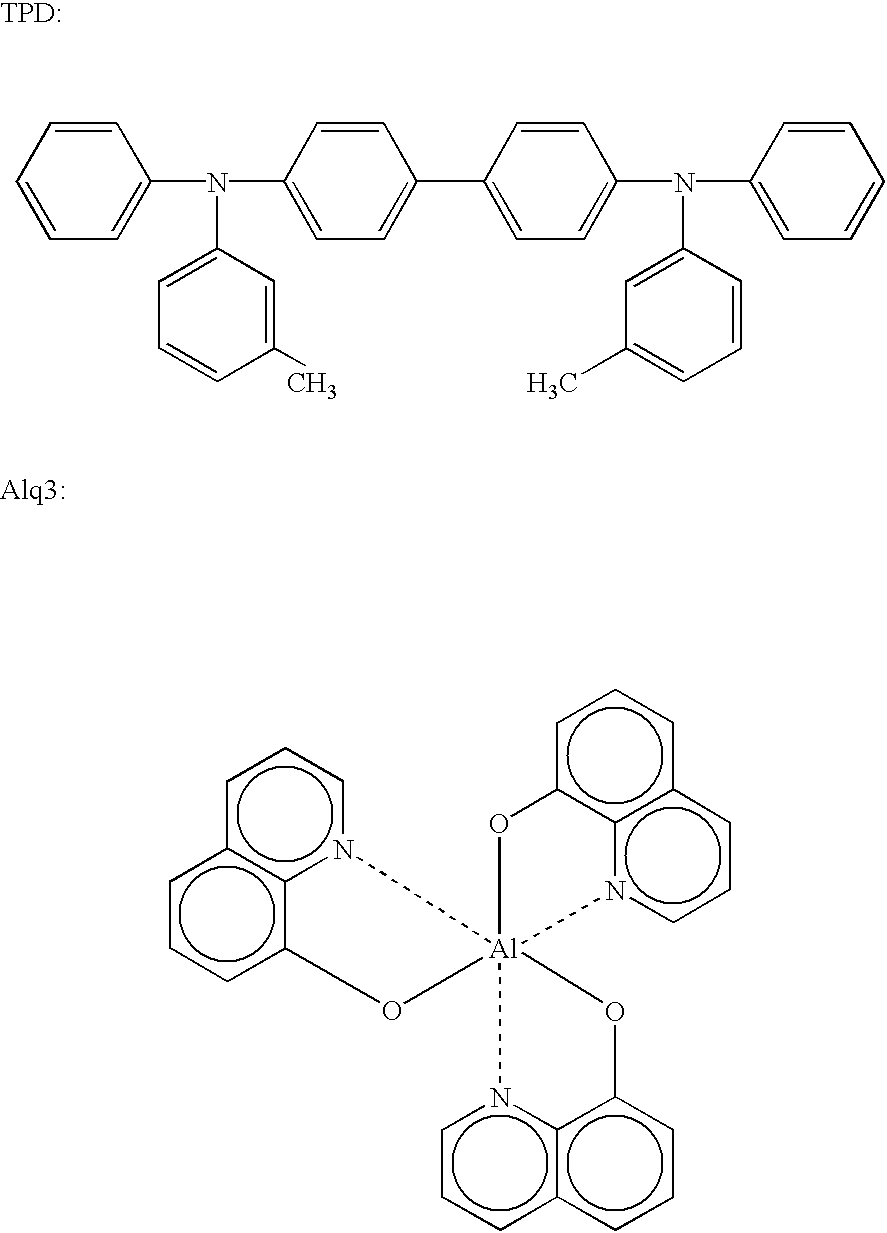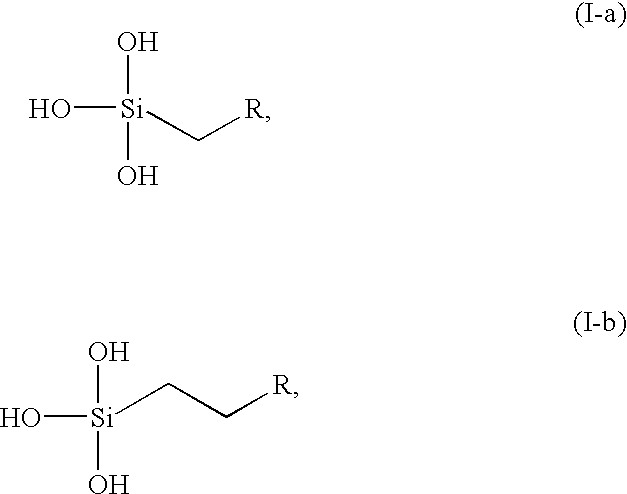Organic electroluminescence device and process for production thereof
a technology of electroluminescence device and electroluminescence process, which is applied in the direction of discharge tube/lamp details, printing, natural mineral layered products, etc., can solve the problems of difficult vacuum deposition, difficult to achieve accurate effect, and inability to readily prepare color el devices with high definition or resolution
- Summary
- Abstract
- Description
- Claims
- Application Information
AI Technical Summary
Benefits of technology
Problems solved by technology
Method used
Image
Examples
example 2
[0135] A simple matrix-type organic EL device was prepared in the following manner.
[0136] On a 1.1 mm-thick glass substrate, a ca. 100 nm-thick ITO film (anode) was formed by sputtering, followed by patterning into a stripe electrode including 10 lines each having a width of 100 .mu.m and a spacing of 40 .mu.m.
[0137] Then, a positively chargeable material 1 was applied in an amount of 20 pl / dot (pixel) onto the ITO film surface at prescribed selected points (corresponding to intersections (dots) of the ITO stripe electrode with a stripe electrode of a cathode to be formed later) in the same manner as in Example 1 according to the ink jet scheme, thus forming a circular thin layer (diameter: ca. 0.1 mm) of the chargeable material 1.
[0138] On the thin layer, in the same manner as in Example 1, a ca. 100 nm-thick luminescence layer (lamination layer) was formed. Substantially no thickness unevenness of the luminescence layer was observed similarly as in Example 1.
[0139] As a cathode, a...
example 3
[0143] A sample matrix-type organic color EL device provided with a multi-color luminescence portion was prepared in the following manner.
[0144] FIGS. 3AA to 3CC are schematic sectional views for illustrating color luminescence layer forming steps including a first luminescence layer forming step (FIGS. 3AA to 3AC), a second luminescence layer forming step (FIGS. 3BA to 3BC) and a third luminescence layer forming step (FIGS. 3CA to 3CC).
[0145] Referring to these figures, the color EL device includes a glass substrate 31, an anode 32, chargeable materials 33a to 33c, electroconductive organic function layers 34a to 34c, and a lamination luminescence layers 35a to 35c.
[0146] On a 1.1 mm-thick glass substrate 31, a 70 nm-thick ITO film (stripe electrode as an anode) 32 was formed by sputtering in the same manner as in Example 1, followed by patterning into a stripe electrode including 10 lines each having a width of 100 .mu.m and a spacing of 40 .mu.m.
[0147] Onto the ITO film surface, ...
PUM
| Property | Measurement | Unit |
|---|---|---|
| Electrical conductor | aaaaa | aaaaa |
| Electric potential / voltage | aaaaa | aaaaa |
| Adsorption entropy | aaaaa | aaaaa |
Abstract
Description
Claims
Application Information
 Login to View More
Login to View More - R&D
- Intellectual Property
- Life Sciences
- Materials
- Tech Scout
- Unparalleled Data Quality
- Higher Quality Content
- 60% Fewer Hallucinations
Browse by: Latest US Patents, China's latest patents, Technical Efficacy Thesaurus, Application Domain, Technology Topic, Popular Technical Reports.
© 2025 PatSnap. All rights reserved.Legal|Privacy policy|Modern Slavery Act Transparency Statement|Sitemap|About US| Contact US: help@patsnap.com



